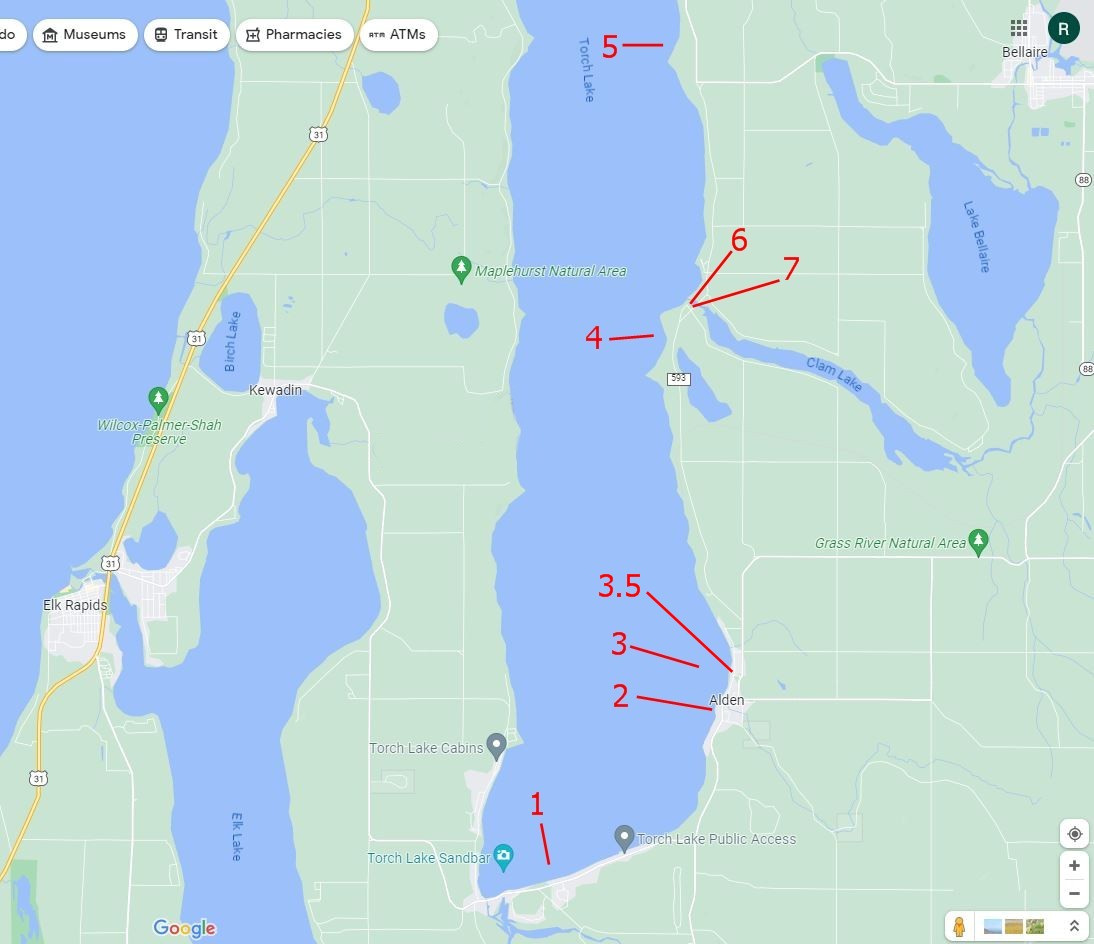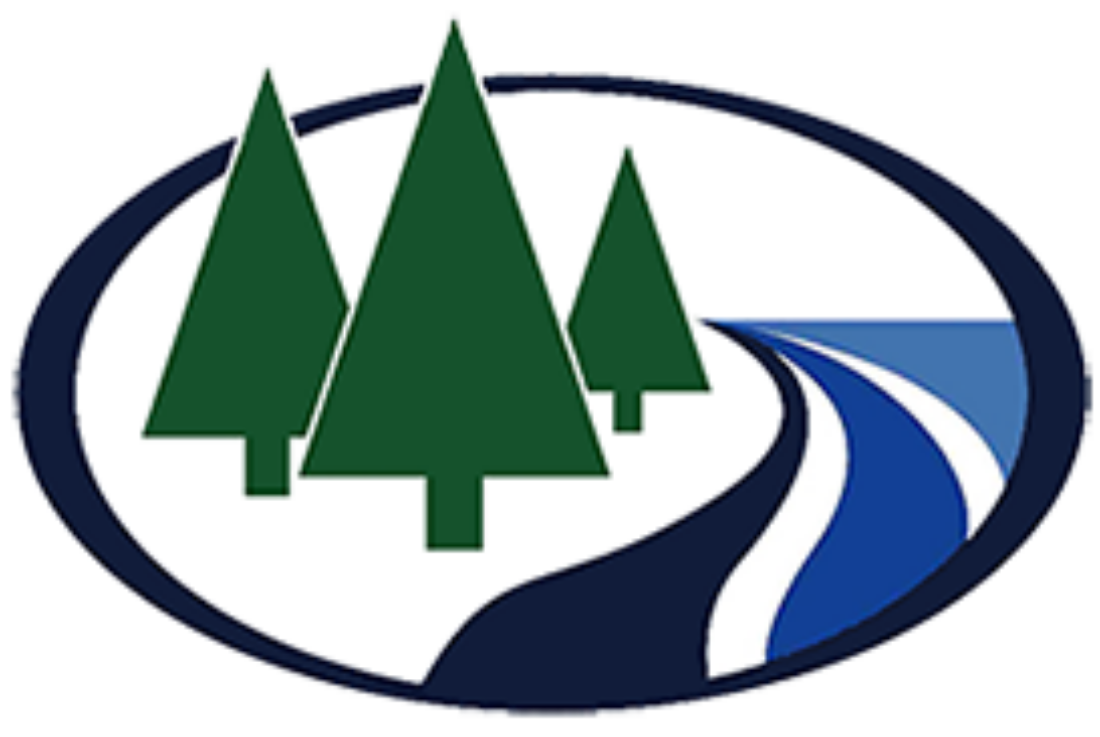Joint TLA-TLPA EWM Team Update
The following article from Bob Milliron summarizes recent activity by the Joint TLA-TLPA
Eurasian Watermilfoil (EWM) Team. This team formed more than 5 years ago is a joint effort
by Three Lakes Association and Torch Lake Protection Alliance to monitor, treat, and control
invasive plant species in and around Torch Lake. Each organization provides volunteers and
budget $$ to complete our annual monitoring and treatment activities.

TLA, TLPA and EWM:
As you all know, we (the joint TLPA – TLA Eurasian watermilfoil team) chemically treated a
number of EWM patches last fall. Inconveniently, we then must wait until mid-summer of the
following year in order to judge the effectiveness of that treatment. So finally last month, we got
in the boat and revisited our treatment sites.
In summary, there was one location that responded amazingly well to the treatment (Alden
Harbor) and one location that did not seem to respond at all (Stoney/Lone Tree embayment).
Treatment response at other locations was moderate.
The chemicals seem to be VERY effective at knocking back the first 90% of the milfoil growth.
Chemicals are then SOMEWHAT effective at knocking back another 5-6% of what milfoil is
left. But then the chemicals seem to be almost INEFFECTIVE at killing the last remaining
plants.
Our team plans to try some new tactics this year in hopes of eradicating these hardy survivors.
For those interested in the details of our EWM sites on Torch Lake, please see the report below,
while referring to the attached map.
1) Sand Sucker Holes – Our team found a small colony of EWM growing here last summer. After
treatment last fall, it seems to be gone. Yay! We will continue to monitor this location every year
though, as it has ideal conditions for re-infestation.
2) Alden Harbor – the harbor here has had, for many years, the largest patch of EWM by far on
Torch Lake. It has been treated on-and-off with chemicals for much of that time. We suspect that
the milfoil here has evolved a degree of resistance to the previous treatments. Last year, on
advice of experts from EGLE, a new chemical called ProcellaCOR was used. Amazingly, during
last month’s site visit, our team found almost ZERO milfoil! We were thrilled.
Not quite willing to believe it though, we plan to revisit the harbor with snorkel and SCUBA
gear later this month to confirm our findings.
3) Old Boiler – a small, isolated few EWM plants are growing at this location. We plan to try
hand-pulling it later this month. (Please note that hand-pulling EWM is a painstaking process,
and not nearly as easy as it sounds.)
3.5) Lake Street boatwell – this is an old (early 1900’s?) private boat harbor near Alden. Our team
just “discovered” EWM growing here last month, after the concerned homeowner contacted us.
We will be treating this location later this year.
4) Stoney/Lone Tree embayment – after treatment in previous years, this EWM colony is 95%
reduced in size from its peak growth. However, it has resisted all efforts to kill the remaining
5%. The ProcellaCOR treatment last year had no apparent effect. We suspect this was not due to
the chemical itself, but instead due to the open-water location. (Think wind and currents,
dissipating the treatment before it could be ingested by the plants.) We are in conversation with
our contractor about utilizing a more targeted method of treatment.
5) Ball Point – this was a newly-discovered EWM location last year. Unfortunately, due to a late
start, we were unable to receive permission from adjacent landowners in time to receive an
EGLE permit for treatment here last fall. We plan on treating it for the first time this year.
6) Butch’s Marina – was also not treated last year, despite having plenty of EWM growing in and
around the boat slips. The problem in this case was the warm weather last fall, which meant that
the boat owners did not remove their boats until extremely late in the season. By the time the
boats were out, EGLE would no longer issue us a treatment permit, out of concern for a species
of fish that spawns in the river at that time. (I forget the exact species.) In any case, this year our
contractor plans to employ a backpack tank and use an underwater wand to deliver the treatment
around the boat slips, earlier in the season, even if the boats are still in place.
7) Clam River Boatwell – is another early-1900’s private boat harbor. It was loaded with EWM
last fall. We treated it with ProcellaCOR, but have so far this year been unable to contact the
landowner in order to do a follow-up check. They have been very cooperative in the past and I’m
confident that we will be talking with them soon.

